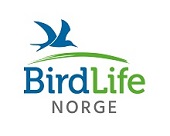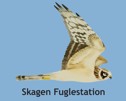
|
|
It’s a Redchat!
Finally, after more than one year of suspense, we can certainly say that the “mystery bird” caught at Lista Bird Observatory on 18 September 2013 was a male hybrid, result of the breeding between a female Whinchat and a male Common Redstart. The first known hybrid from two different genera within the Muscicapidae family. By Aïda López A genetic study carried by the University of Oslo (Natural History Museum), in collaboration with Lista Bird Observatory, was published last month in Journal of Ornithology: Intergeneric hybridization between Common Redstart Phoenicurus phoenicurus and Whinchat Saxicola rubetra revealed by molecular analyses. Hybridization in birds is widespread and approximately one in ten species is known to hybridize, and the true global incidence is likely to be much higher (Grant and Grant, Science 10 April 1992). Although it is more common that different species hybridize when they belong to the same genus, it is not rare to find intergeneric hybrids between swallows and martins, between tits or more rarely between warblers. So, we know from earlier that passerines from different genera can hybridize. However, the “mystery bird” is the first intergeneric hybrid known among the Muscicapidae family (which includes Whinchats, Stonechats, Redstarts, Bluethroat, Robin, Nightingales and Flycatchers among others). The appearance of the bird was mostly Whinchat like -pale supercilium, buffish underparts, spotted breast and pale upperparts- but also had a few characteristics from the Common Redstart –it had orange tail feathers and was caught coinciding with the high peak migration at Lista of Common Redstarts, see graphics to the right. As the article remarks, it is crucial to emphasize the importance of the procedure in the field. Whenever we catch a “weird looking bird” we should always –as far as the health of the bird let us carry on- take pictures from different sides, take measurements and get DNA samples (either feathers or blood). Whinchats usually build the nest on the ground among tall grass. However, Common Redstarts make them in cavities, holes in trees or in stone walls or roofs –between 1 and 6 meters above the ground. So a question we still have in mind is…Where did the chick fledge? Thanks to the Norwegian Natural History Museum for the co-operation, The Norwegian Research Council for the funding received for this study, and grant from The Norwegian Environmental Agency to the Constant Effort Survey at Lista Bird Observatory. | |||||||

| Ringing numbers |
|
Sorry, but we are outside of the spring and autum seasons. Detailed log |
| Reportasje fra Lista FS i Aftenposten |

|
| Seasonal deviation | ||||||||||||||||||||||||||||||
|
|
Følg Følg Lista FS på facebook.com |
| Siste 5 på siden |
|
Festivalgjester presenterer ny fuglebok Lista Fuglefestival 2025 Looking for bird ringers for spring and/or autumn 2025 Begynnerkurs i ringmerking: 26.-27. april 2025 Report from autumn 2024 |
| Nyheter fra NOF |
|
Ny taksonomi på vingene –... Klima- og miljøministeren vil... Har du funnet en måkeunge?... Tvillingartene: Hauk over hauk Hvor mange fuglearter finnes... Statsforvalteren opphever... Storskarv i Europa i... Norge må heve stemmen for... |
Lista Fuglestasjon
Fyrveien 6
NO-4563 Borhaug
post@listafuglestasjon.no Tlf: 949 86 793
 |  |


 Only in English
Only in English



